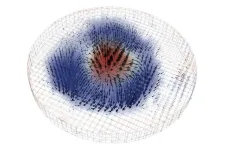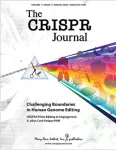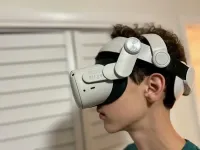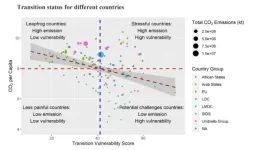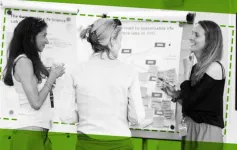(Press-News.org) New Haven, Conn. — Whether we’re staring at our phones, the page of a book, or the person across the table, the objects of our focus never stand in isolation; there are always other objects or people in our field of vision. How that visual “clutter” affects visual processing in the brain, however, is not well understood.
In a new study published Oct. 22 in the journal Neuron, Yale researchers show that this clutter alters how information flows in the brain, as does the precise location of that clutter within the wider field of vision. The findings help clarify the neural basis of perception and offer a deeper understanding of the visual cortex in the brain.
“Prior research has shown that visual clutter has an effect on the target of your perception, and to different degrees depending on where that clutter is with respect to where you’re currently looking,” said Anirvan Nandy, an assistant professor of neuroscience at Yale School of Medicine (YSM) and co-senior author of the study. “So for example, if I’m asked to read the word ‘cat’ out of the corner of my eye, the letter ‘t’ will have a much greater effect than the letter ‘c’ in my inability to accurately identify the letter ‘a,’ even though ‘c’ and ‘t’ are equidistant from ‘a.’”
This phenomenon is called “visual crowding,” and it’s why we can’t read out of the corner of our eyes, no matter how hard we try, and why we have a hard time identifying objects when they are located among the clutter at the edge of our vision, said Nandy.
For the new study, researchers set out to determine what happens in the brain when this visual clutter is present.
To do so, they trained macaque monkeys — a species whose visual systems and abilities are most similar to humans — to fixate on the center of a screen while visual stimuli were presented in and outside of their receptive fields. During this task, researchers recorded neural activity in the monkey’s primary visual cortex, the brain’s main gateway for visual information processing.
The researchers found that the specific location of this clutter within the monkey’s visual field didn’t have much of an effect on how information was passed between neurons in the primary visual cortex. It did, however, affect how efficiently that information flowed.
It’s kind of like a phone tree, in which individuals are asked to call one other person to relay a piece of information until, one after another, every member of the group has received the information. In the case of visual perception, researchers say, the location of visual clutter didn’t change the order of the phone tree, but it did change how well the message was relayed person to person.
“For example, visual clutter in one location would drive information in a particular layer of the primary visual cortex to a lesser extent than clutter in another location,” said Monika Jadi, assistant professor of psychiatry at YSM and co-senior author of the study.
The researchers also uncovered a general property of the visual cortex that was not previously known.
There are several brain areas involved in seeing and recognizing an object, and information is passed through those regions in a particular order. For instance, the primary visual cortex sends a package of information onto the secondary visual cortex, which then sends its information onto the next stop.
“What was already well understood is that there are complex computations that take place within individual visual areas and the output of these computations are then transferred to the next area along the visual hierarchy to complete the whole object recognition computation,” said Jadi.
What the researchers found in the new study was that there are also subunits within these larger areas that are doing their own computations and relaying some, but not all, of that information to other subunits. The finding bridges a disconnect that had existed between different fields studying vision, said Nandy.
The researchers are now interested in how clutter might affect information processing between brain regions and how attention influences this system.
“When you’re driving, for instance, you may be looking at the car in front of you, but your attention could be focused on a car in the next lane as you try to determine if they’re about to merge,” said Nandy.
Therefore, the detailed visual information you’re getting is from the car in front of you, but the information of interest is outside of your focus.
“How does that attention compensate for the fact that while you don’t have the best resolution information, you’re still able to perceive that attended part of the visual space much better than where you’re actually looking?” said Jadi. “How does attention influence information flow in the cortex? That’s what we want to explore.”
Xize Xu, a post-doctoral fellow at YSM, and Mitchell Morton, a former post-doctoral associate at YSM, were co-first authors of the study.
# # #
END
A difficult-to-describe nanoscale object called the magnetic skyrmion might one day yield new microelectronic devices that can do much more — for example, massive data storage — all while consuming much less power.
But researchers need a more detailed understanding of skyrmions if they are ever to be used reliably in computational devices, including quantum computers. Peter Fischer, a senior researcher at the Department of Energy’s Lawrence Berkeley National Laboratory (Berkeley ...
Magnetic resonance imaging (MRI) can spare many patients with rectal cancer from invasive surgery that can carry lifelong side effects, new research indicates.
The findings, from UVA Cancer Center’s Arun Krishnaraj, MD, MPH, and collaborators, indicate that MRI can predict patient outcomes and the risk of the tumor reccurring or spreading for patients who have undergone chemotherapy and radiation.
That information could be extremely useful in determining the best course of treatment and deciding whether a patient can ...
New Rochelle, NY, October 18, 2024—An invited Guest Editorial entitled “Give Cas a Chance,” by Fyodor Urnov, PhD, Director of Technology & Translation at the Innovative Genomics Institute (IGI), anchors the October 2024 special issue of The CRISPR Journal on “CRISPR Trials.”
As guest editor of the special issue, Dr. Urnov has penned an extraordinary editorial that emphatically defines the magnitude of the crisis in the genome editing arena and offers a path forward. The inherently programmable nature of CRISPR gene editing that makes it ...
WASHINGTON—Adults with type 2 diabetes on a low-carbohydrate diet may see benefits to their beta-cell function allowing them to better manage their disease and possibly discontinue medication, according to new research published in the Endocrine Society’s Journal of Clinical Endocrinology & Metabolism.
Beta-cells are endocrine cells in the pancreas that produce and release insulin, the hormone that controls blood sugar levels.
More than 38 million Americans have diabetes, and over 90% of them have ...
Exposure to higher levels of air pollution as a baby is linked to having a peanut allergy throughout childhood, according to a new study. And policies aimed at tackling poor air quality could potentially reduce the prevalence and persistence of peanut allergies, it stated.
The research, led by Murdoch Children’s Research Institute (MCRI) and the University of Melbourne, found being exposed to higher levels of air pollution from infancy was associated with increased odds of developing a peanut allergy and having the allergy persist across the first 10 years of life. However, the same association was not seen for egg allergy or eczema.
Published ...
The metaverse, a space where the lines between physical and digital realities blur, is rising among younger populations. As of March, 33% of teens own a virtual reality (VR) device and 13% use it weekly.
With the metaverse offering richer emotional experiences, youth may be particularly vulnerable to significant harm in these immersive spaces, underscoring the need to explore potential risks.
Unfortunately, research of online victimization in the metaverse is sorely lacking. A new study by Florida Atlantic University, in collaboration with the University of Wisconsin-Eau Claire, is one of the first to examine the ...
The Energy Transition Vulnerability Index (ETVI) quantifies the vulnerability of nations to adverse impacts of transitioning away from fossil fuels. The COP28 agreement has called for all countries to wind down use of fossil fuels to combat climate change—but the agreement stipulates that these transitions should not disproportionately harm historically marginalized and vulnerable stakeholders. Xunpeng Shi and colleagues create a method of quantifying energy transition vulnerability for 135 countries from 2010 to 2020. The indicator focuses on exposure—which captures the magnitude of the changes required—, ...
Mental fatigue may make rewards more desirable, according to a study in rats and humans. Exerting cognitive effort has been linked with making unhealthy choices. In the past, the link has been explained via a weaking of inhibitory control or will power. Marcello Solinas and colleagues explore the possibility that cognitive effort may also make unhealthy choices more tempting by increasing the perceived reward. Rats who completed a cognitively demanding task self-administered more cocaine than rats who did not complete a cognitive demanding task—or rats who were allowed ...
A significant step forwards in changing research practices towards sustainability has been taken with the publication of the Heidelberg Agreement on Environmental Sustainability in Research Funding. The agreement provides a framework for research funders to play an active role and incentivize sustainable practices in research. It outlines principles for transitioning to a more sustainable research system and practical recommendations on how to implement sustainability in funding schemes.
A key focus of the Heidelberg Agreement is to ensure that research funders take a proactive approach to promoting sustainability in scientific ...
A model of human behavior finds that people will share information if enough—but not too many—of their contacts do so. Humans are social creatures, and many behaviors and beliefs can spread from person to person. Understanding the dynamics of behavioral diffusion can help encourage healthy or sustainable behaviors or stop the spread of misinformation. Linear threshold models assume that people will adopt a behavior when the number of their social contacts that have done so passes a threshold. Pouria Ramazi and colleagues propose an addition to the model, ...
